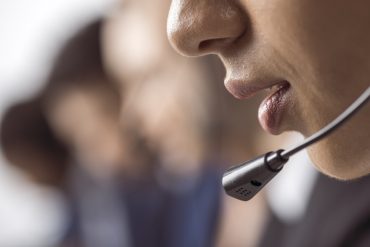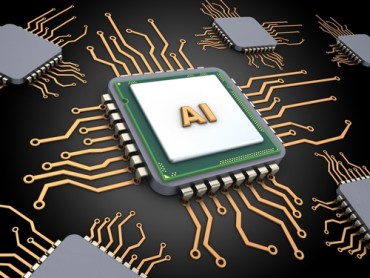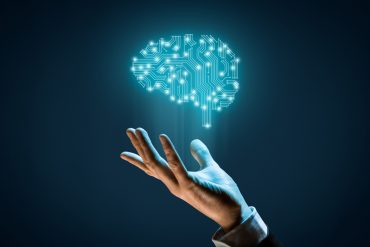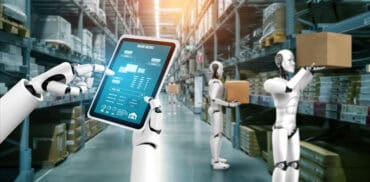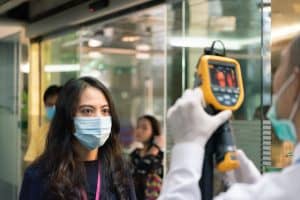
The post-pandemic “new normal” will see a proliferation of IoT-connected biosensors both in their traditional locations and in entirely new locations, such as government, enterprise, and consumer environments.
The COVID-19 crisis has brought biosensing technology to the forefront of our lives. Just as people now take for granted the requirement that they be searched prior to boarding airplanes, we’re going to have to get used to being scanned for infectious diseases in many public places.
Every time we’re scanned at the office, supermarket, or any other public place for the possibility of infection, we’re being monitored for the possibility that you’re a carrier of the novel coronavirus. As a current example of what we can expect more generally going forward, RXR Realty, the owner of Rockefeller Center, has installed thermal cameras that measure body temperatures as employees enter the office towers. The landlord is also developing a mobile app for tenants to monitor how closely their workers are complying with social distancing.
See also: The Impact of AI on the Healthcare Industry
IoT-Connected Biosensors Will Become Ubiquitous in the “New Normal”
In the battle against this pandemic, the Internet of Things (IoT) has become a critical biosensing defense for the human race.
Increasingly, IoT-connected sensors, scanners, and other monitoring devices will be where the inception, spread, and impact this and future contagions will be monitored and controlled. These solutions are supporting such pandemic-related initiatives as contact tracing, remote patient monitoring, interactive medicine, inpatient monitoring, quarantine monitoring, and proximity registration.
Connected IoT biosensors can detect viral pathogens in the air, water, soil, surfaces, and human and animal tissues. They will also measure any symptomatic vital signs, such as heart rate, blood pressure, temperature, blood glucose, asthma, mood, and oxygen saturation. Aggregation of IoT-sourced biosensor data with clinical test results can provide a clearer picture of how a contagion spreads and how severely it impacts various demographics. This data can yield key intelligence for use in controlling an outbreak and speeding the delivery of appropriate pharmaceuticals, medical supplies, and skilled personnel for treating those who come down with an infectious disease.
Artificial intelligence (AI) will be a key component in the fight against infectious diseases. Only by deploying machine learning (ML), deep learning (DL), and other AI models to vast amounts of biosensor data will the human race be able to detect and quarantine infections early on in the general population. For example, San Francisco-based Kogniz Health provides an AI-enabled real-time IoT system that tracks fevers from a distance, identifies exposure risks, and sends automatic health and safety alerts to help facility managers enforce rules governing social distancing and face-mask wearing.
To detect symptoms even before people realize they’re infected, automated environment sensing will use multimodal AI to monitor the environment, such as by pairing facial recognition with temperature scanning and listening to the audio of people coughing. For example, a Chinese AI company, called MEGVII, is developing an AI-enabled temperature-detection IoT solution that integrates facial recognition.
Deploying Specialized Biosensors for COVID-19 Detection
While we’re in the thick of the current pandemic, the imperative will be for AI-driven biosensors that are engineered specifically to detect COVID-19 rapidly without having to depend on clinical testing. In fact, the US Centers for Disease Control recently called for all workplaces to require that personnel submit to temperature and symptom checks when showing up at the office.
With that in mind, we see three broad IoT-centric approaches for biosensing, hence defending ourselves against, COVID-19 in the wild:
- Sense the COVID-19 pathogen: The US National Science Foundation recently awarded a $200,000 grant to the University of Utah electrical and computer engineering professor Massood Tabib-Azar to develop a prototype of a portable, reusable coronavirus sensor. The biosensor will plug into the power jack of an app-equipped cellphone or communicate with it wirelessly. The user would place a drop of their saliva on the sensor, with the results appearing on the phone within 60 seconds. The sensor is embedded with “aptamers” (i.e., single-strand DNA) that will attach to the proteins in any COVID-19 virus molecules that might be present in the saliva sample. In addition, the presence of the COVID-19 virus on any surface could also be tested by brushing a swab across the surface and then across the sensor. In addition, the same technology could be used to detect the presence of airborne COVID-19 particles in elevators, aircraft, and other enclosed spaces. Separately, Harvard and MIT researchers are developing a face mask that lights up when sensors detect COVID-19 in saliva, producing a fluorescent signal when a person with the coronavirus breathes, coughs, or sneezes.
- Sense the symptoms of COVID-19: High temperatures are one of many symptoms associated with COVID-19, though fevers are not found in a large proportion of people who come down with coronavirus. Nevertheless, thermal cameras and connected thermometers are being used all over the world to spot individuals who might be ill with or carrying the contagion. Infrared thermal imaging is being used for active surveillance and screening of infected and carrier persons at borders, airports, and elsewhere throughout the world. In China alone, people have been scanned with handheld, non-contact infrared thermometers or “temperature guns” as they entered buildings, or had to submit to an ear thermometer check prior to being allowed to enter railway stations. Many hospitals are already using connected thermometers to screen patients and staff. For example, COVID-19 patients in China’s Shanghai Public Health Clinical Center and other hospitals throughout the country have been equipped with continuous temperature sensors. Built by California-based connected health startup VivaLNK’s, the sensors provide continuous, real-time monitoring of any changes in body temperature. They rely on IoT Access Controller from Cassia to receive real-time patient data from the sensors and transmit this data wirelessly via Bluetooth Low Energy to nursing stations for continuous monitoring. As an alternate approach for outpatient environments, researchers at IIT-Istituto Italiano di Tecnologia have developed a prototype of a wearable smartband that alerts users when their body temperature is higher than 37.5 degrees Celsius. If worn by others, this smartband can alert users with high temperatures when the distance to another person is too close to be safe.
- Sense environmental conditions conducive to the spread of COVID-19: Yet another approach is to sense the surfaces that are carrying COVID and other infectious agents, and, optionally, disinfect them. This process can be automated through robotics. One solution that does this is from UVD Robots. It is designed to roll through hospital operating theatres and patient rooms and irradiate all critical surfaces with enough ultraviolet light to kill viruses and bacteria. The company’s flagship robot consists of a mobile base with multiple lidar sensors and UV lamps mounted on top. It scans the room using its sensors and creates a digital map, which users annotate to indicates the places where the robot should perform disinfecting tasks. The robot emits short-wavelength ultraviolet-C light powerful enough to destroy the DNA or RNA of any microorganisms exposed to them. A similar system from Texas-based Xenex Disinfection Services uses a pulsed xenon UV light system. Soon to be equipped with IoT connectivity, it can be used in any department and in any unit within a healthcare facility, including isolation rooms, operating rooms, general patient care rooms, contact precaution areas, emergency rooms, restrooms, and public spaces.
Implementing Flexible Biosensing into General-Purpose IoT Environments
To brace themselves against the current pandemic and future outbreaks, organizations need to ensure that they have IoT biosensors and corresponding AI that has the flexibility to sense any type of contagion.
When evaluating IoT solution vendors in this light, we can subset the most strategic contenders as such:
- Alliot Technologies: This vendor provides IoT biosensor solutions for body temperature monitoring. To reduce the risk of transmission of COVID-19 and other infectious diseases, its Kentix SmartXcan body temperature sensor can screen up to 700 people per hour with contactless body temperature monitoring. With over 1,000 measuring points, the Kentix SmartXcan body temperature sensor provides contactless measurements via the eyes and forehead. The sensor uses thermal analysis to produce high precision measurements. Based on the sensor readings, the Kentix SmartXcan can be configured to admit/refuse entry. The sensor is available as a standalone product or soon with an integrated RFID reader. It provides temperature measurements in less than 1 second and can be configured to work with access control systems and turnstiles.
- Baidu: This vendor provides IoT biosensor solutions for AI-driven infrared sensing to predict people’s temperatures. The solution, now in use in Beijing’s Qinghe Railway Station, combines computer vision and infrared to detect the forehead temperature of up to 200 people a minute within a range of 0.5 degrees Celsius. The system alerts authorities if it detects a person with a temperature above 37.3 degrees Celsius (99.1 degrees Fahrenheit). To support this deployment, Baidu has developed several tools that are effective in building awareness and screening populations, including an AI-powered, non-contact infrared sensor system that provides users with fast multi-person temperature monitoring that can quickly detect a person if they are suspected of having a fever, one of the many symptoms of the coronavirus. This technology is currently being used to identify passengers who are potentially infected where it can examine up to 200 people in one minute without disrupting passenger flow. Baidu’s AI temperature sensor system can quickly screen crowds to improve detection efficiency and accuracy. In addition, Baidu provides an open-source model to detect whether individuals in crowded areas are wearing masks, boasting a classification accuracy of 97.27% with a robust performance in long-tail scenarios, such as an oronasal mask or side faces.
- CloudMinds: This vendor provides IoT biosensor solutions for AI-enhanced, infrared, large-scale, body temperature monitoring for rapid detection of high temperature. The sensors can provide initial temperature screening for groups of people whose temperatures are above the normal extent and provide high temperature warnings after detection. Application scenarios include crowded places ranging from sports arenas, exhibition centers, airports and transport hubs, office buildings, shopping centers, grocery stores, manufacturing facilities, schools, and retail shops.
- IBM: This vendor provides IoT biosensor solutions for ensuring the safety of worksites and employees with site monitoring and management of temperature, occupancy, face mask detection, and social distancing. IBM Maximo Worker Insights provides near real-time access to workplace and employee data from cameras, Bluetooth beacons, and mobile phones. It supports temperature monitoring, management of occupancy and no-go zones, and facilitation of employee social distancing and contact tracing while protecting privacy. It uses IoT data and prebuilt analytics for monitoring and contact tracing. It generates insights gathered from thermal imaging or infrared cameras, Bluetooth beacons, and mobile phones to help conduct body temperature monitoring, health monitoring, and workplace contact tracing. It sees occupancy and workplace use in real time and responds to safety concerns. It helps workers stay informed and help supervisors use predictive information and insights to address issues before they become problems. By monitoring crowd density and no-go zones, it alerts personnel when a policy has been breached. Wearable sensors provide data that can help monitor behavior, track vital signs, and deliver more predictive protection. Prebuilt or customized “safety shields” apply aggregate data results against conditions to detect hazards.
- iWEECARE: This vendor provides IoT biosensor solutions for cloud-based continuous temperature monitoring of COVID-19. Temp Pal can lower the risk of infections by early warning a fever and prevents the overwhelming of health systems by reducing physical contact between caregivers and patients. Temp Pal is currently used in protecting healthcare workers at Ireland’s Cork University Hospital and Taiwan’s Cheng Hsin General Hospital. It is also used for self-quarantine management in Nanjing City of China to reduce workloads and close contacts with people at high risk. The coin-sized soft patch, which weighs 3 grams and lasts 36 hours per battery charge, can transmit temperature data via mobile app or gateway to the cloud, allowing one-to-many centralized tracking and timely treatment.
- Kinsa: This vendor provides IoT biosensor solutions for tracking COVID-19 via connected thermometers. The solution collects a large amount of anonymous health data that could offer insights into the current and future pandemics. The system’s networking technology connects thermometers via Bluetooth to an app on the user’s phone, which reports anonymized data back to Kinsa’s cloud over the Internet. These data points can enable real-time disease surveillance and serve as an early warning sign of new clusters of the disease. The company only organizes data down to the county level. The apps, which provides the temperature reading and some basic demographic information about the person whose temperature was taken as well as their other symptoms, can offer rudimentary guidance about whether a visit to the doctor is needed or not, and whether the user’s area is seeing unusual levels of fever. Kinsa provides aggregated data from the million-plus thermometers in its connected ecosystem and analyzes and breaks out on its U.S. Health Weather Map. Kinsa sells its thermometers directly to consumers but plans to collaborate more closely with local governments, health authorities, and school districts.
- Semtech: This vendor has teamed with Polysense Technologies to provide IoT biosensor solutions for monitoring of human body temperatures based on Semtech’s LoRa LPWAN. The Semtech sensors provide real-time data to frontline healthcare workers and let them quickly screen individuals with a high temperature. The sensor uses connectivity based on the LoRaWAN protocol to communicate temperature data to cloud-based applications for trend analysis. Alerts are pushed to mobile devices if temperature thresholds are exceeded, allowing the patient to limit exposure to others and seek medical attention. The offerings come either in a wireless sensor for individual use and as a standalone thermal meter for use in public spaces. Polysense’s thermal temperature monitoring applications serve as an example of how LoRa-based IoT solutions can provide immediate insights that help communities and healthcare providers better address the COVID-19 crisis.
Takeaway
Biosensors are becoming ubiquitous in our lives, and the current COVID-19 emergency is accelerating a trend that was already underway. Enterprises should incorporate AI-driven biosensors into their IoT strategies. The post-pandemic “new normal” will see a proliferation of IoT-connected biosensors both in their traditional locations—in other words, healthcare providers–and in entirely new locations, such as government, enterprise, and consumer environments.
The entire healthcare ecosystem—ranging from pharmaceutical companies and drug makers to vaccine developers, insurers, and hospitals—is adopting IoT biosensors to address the COVID-19 emergency. To detect and prevent the spread of contagions, biosensors will become ubiquitous at airports, office buildings, restaurants, and other public places. We will see biosensors on new platforms, such as drones feeding back real-time sensor AI into databases, dashboards, and applications managed by public health authorities.
More biosensors will be wearables intended for scientific, commercial, and personal use. And we will see medical biosensors incorporated as standard components in smart homes, especially in those and assisted-living facilities serving vulnerable populations. The privacy issues involved in sourcing and accessing all of this personally identifiable information will need to be addressed head-on, but that shouldn’t deter governments, companies, and private citizens everywhere from adopting IoT biosensors promptly.
As this smart health-monitoring infrastructure takes hold worldwide, the human race will be able to stop pandemics in their tracks before losses of life, health, and vitality grow too dire.
Read other articles by James Kobielus here.


